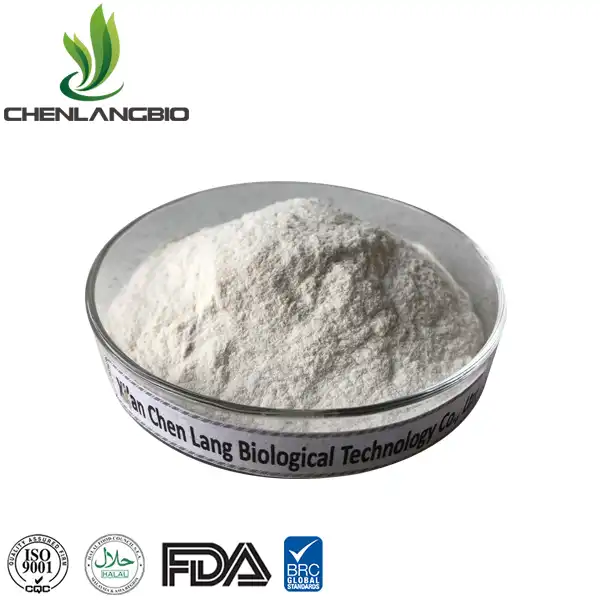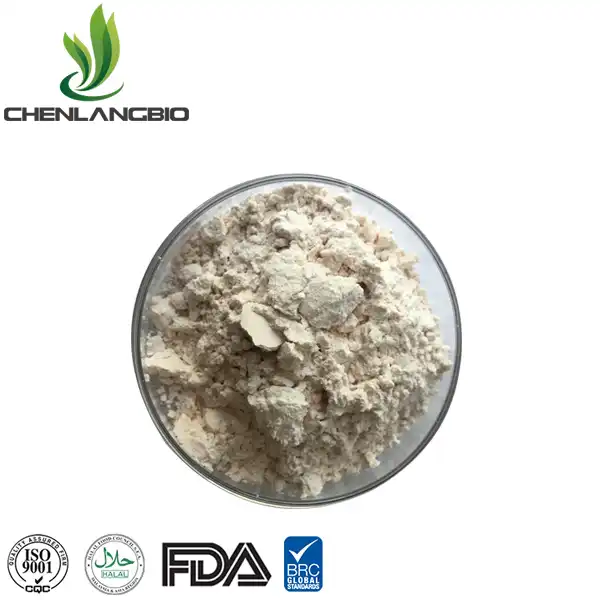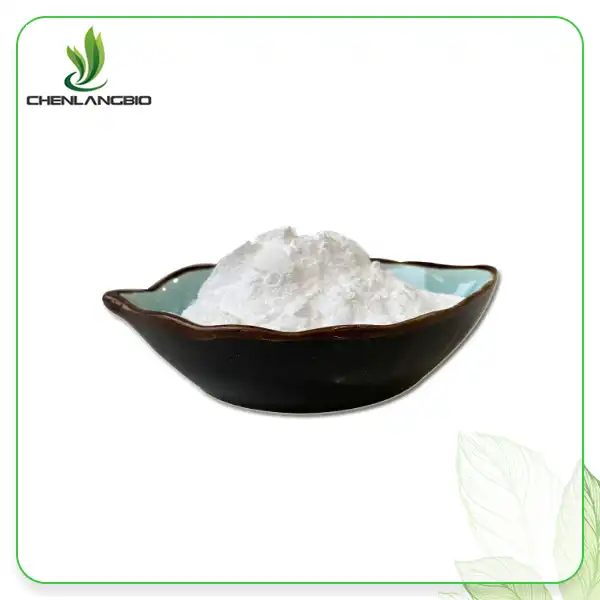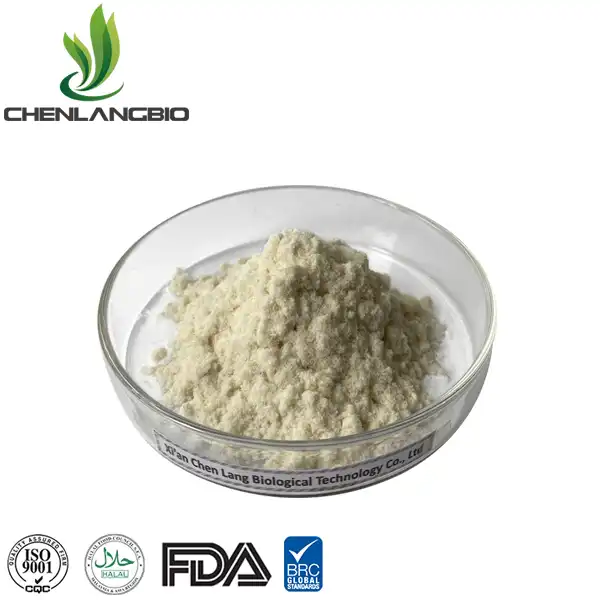What are the Excitation and Emission Properties of D-Luciferin Sodium Salt?
2025-04-15 16:18:12
D-Luciferin Sodium Salt is a critical substrate used in bioluminescence research and applications. Understanding its excitation and emission properties is essential for researchers working with this compound. This article explores the photochemical characteristics that make D-Luciferin Sodium Salt a valuable tool in various scientific fields.
D-Luciferin Sodium Salt exhibits specific excitation and emission properties that make it exceptionally useful for bioluminescence applications. When combined with luciferase enzymes and ATP, D-Luciferin Sodium Salt undergoes oxidation, resulting in light emission with a peak wavelength of approximately 560-580 nm. This emission falls within the yellow-green region of the visible spectrum. The excitation properties are unusual compared to traditional fluorophores, as D-Luciferin Sodium Salt does not require external light excitation to emit light, instead using an enzyme-catalyzed chemical reaction that produces an excited-state product that subsequently emits photons.
Understanding the Photochemical Properties of D-Luciferin Sodium Salt
Molecular Structure and Light Emission Mechanism
The unique molecular structure of D-Luciferin Sodium Salt plays a crucial role in its light-emitting capabilities. This compound belongs to the class of thiazole heterocyclic compounds with the molecular formula C₁₁H₇N₂NaO₃S₂ and a molecular weight of 302.30. When D-Luciferin Sodium Salt interacts with the enzyme luciferase in the presence of ATP, it undergoes a complex biochemical reaction that results in the formation of an excited-state oxyluciferin molecule. As this excited molecule returns to its ground state, it releases energy in the form of photons, creating the characteristic bioluminescent glow. This reaction is highly efficient, with a quantum yield approaching 0.41 (41% of molecules undergoing the reaction emit a photon), making D-Luciferin Sodium Salt one of the most efficient bioluminescent substrates available. The reaction kinetics of D-Luciferin Sodium Salt are also noteworthy; under optimal conditions, the light emission occurs almost instantaneously upon mixing with luciferase and ATP, allowing for real-time monitoring of biological processes. Researchers at Xi An Chen Lang Bio Tech Co., Ltd. have refined the purification process to achieve a purity exceeding 99%, ensuring consistent and reliable bioluminescent reactions with minimal background interference or variability between batches.
Spectral Characteristics and Emission Profile
The spectral characteristics of D-Luciferin Sodium Salt make it particularly valuable for biological imaging applications. When oxidized by luciferase, D-Luciferin Sodium Salt emits light with a broad spectrum centered around 560-580 nm, which falls within the yellow-green portion of the visible spectrum. This emission wavelength is advantageous for biological applications because it penetrates tissues more effectively than shorter wavelengths, allowing for deeper imaging in living organisms. The emission spectrum can be affected by several factors, including pH, temperature, and the presence of metal ions. Under standard conditions (pH 7.2-7.4 at 37°C), the emission peak is typically around 562 nm, but this can shift by several nanometers depending on the microenvironment. The half-life of the light emission reaction varies with conditions but typically ranges from a few minutes to half an hour, providing sufficient time for measurement while allowing for temporal resolution of dynamic biological processes. When used in cell-based assays, D-Luciferin Sodium Salt from Xi An Chen Lang Bio Tech Co., Ltd. produces a steady signal with minimal fluctuation, enabling precise quantification of luciferase activity even at low concentrations (detection limits as low as picomolar amounts of enzyme).
pH and Temperature Effects on Luminescence Properties
The luminescence properties of D-Luciferin Sodium Salt are significantly influenced by environmental conditions, particularly pH and temperature. The optimal pH range for maximum light emission is between 7.0 and 8.0, with peak activity typically observed around pH 7.8. At more acidic pH values (below 6.0), both the intensity and duration of light emission decrease substantially, while at more alkaline conditions (above 9.0), the rapid decomposition of the substrate leads to a bright but short-lived flash of light. Temperature also plays a critical role in the bioluminescent reaction; the optimal temperature range for most luciferase-D-Luciferin Sodium Salt reactions is 20-25°C for in vitro applications and 37°C for in vivo systems. At lower temperatures, the reaction proceeds more slowly but with greater overall light output over time, while higher temperatures increase the reaction rate but may reduce total photon emission due to faster enzyme denaturation. These properties must be carefully considered when designing experimental protocols involving D-Luciferin Sodium Salt. Xi An Chen Lang Bio Tech Co., Ltd. provides detailed guidance on optimizing reaction conditions for specific applications, ensuring researchers can achieve maximum sensitivity and reproducibility. Their D-Luciferin Sodium Salt is tested under various environmental conditions to ensure consistent performance across a range of experimental settings.
Applications Leveraging the Excitation and Emission Features
Bioluminescence Imaging in Living Systems
The exceptional excitation and emission properties of D-Luciferin Sodium Salt have revolutionized in vivo imaging techniques. When administered to animals expressing luciferase (either through genetic modification or introduction of luciferase-expressing cells), D-Luciferin Sodium Salt enables non-invasive visualization of biological processes in real-time. The compound's ability to penetrate tissues and the favorable emission wavelength (560-580 nm) allow for detection of signals from deep tissues with minimal background interference. This has made D-Luciferin Sodium Salt an invaluable tool for tracking tumor growth, monitoring infection progression, and evaluating therapeutic responses in living subjects. In cancer research, for example, luciferase-expressing tumor cells can be implanted in animal models, and their growth and metastatic spread can be monitored over time by periodic administration of D-Luciferin Sodium Salt and measurement of the resulting bioluminescence signal. The quantitative relationship between signal intensity and the number of viable cells makes this approach particularly powerful for longitudinal studies. Xi An Chen Lang Bio Tech Co., Ltd.'s high-purity D-Luciferin Sodium Salt (>99%) ensures consistent signal-to-noise ratios in these applications, allowing researchers to detect even subtle changes in biological processes with high confidence. Their product is specifically optimized for in vivo applications, with careful attention to solubility (10 mg/ml in water or PBS pH 7.2) and bioavailability to maximize signal intensity after administration.
Luciferase Reporter Systems and Gene Expression Monitoring
D-Luciferin Sodium Salt's distinctive excitation and emission characteristics make it the substrate of choice for luciferase reporter systems, which are widely used for monitoring gene expression and promoter activity. In these systems, the luciferase gene is placed under the control of a promoter of interest, and the resulting luciferase expression is quantified by measuring light emission after adding D-Luciferin Sodium Salt. The linear relationship between luciferase concentration and light output over several orders of magnitude allows for precise quantification of promoter activity. This approach has been instrumental in studying transcriptional regulation, signal transduction pathways, and the effects of various compounds on gene expression. A key advantage of using D-Luciferin Sodium Salt in these systems is the absence of background signal in mammalian cells, as they do not naturally produce luciferase or luciferase-like enzymes. This results in exceptionally high signal-to-noise ratios compared to fluorescent reporter systems. Furthermore, the fast kinetics of the luciferase-D-Luciferin Sodium Salt reaction enables real-time monitoring of rapid changes in gene expression. Xi An Chen Lang Bio Tech Co., Ltd. supplies D-Luciferin Sodium Salt that is specifically tested for reporter gene assays, ensuring low batch-to-batch variability that is crucial for comparative studies over time. Their product undergoes rigorous quality control to verify consistent performance in common reporter cell lines and assay formats.
ATP Detection and Cell Viability Assessment
The bioluminescent reaction between D-Luciferin Sodium Salt and luciferase requires ATP as a cofactor, making this system an exquisitely sensitive method for ATP detection. This property has been harnessed for developing assays to measure cell viability, cytotoxicity, and metabolic activity across various applications. The principle is straightforward: viable cells maintain a relatively constant level of ATP, which decreases rapidly when cells are damaged or dying. By adding a mixture of luciferase and D-Luciferin Sodium Salt to cell lysates or culture supernatants, the resulting light emission is directly proportional to the ATP concentration, providing a quantitative measure of cell viability. These assays offer several advantages over traditional viability methods, including higher sensitivity (detection limits as low as 10^-16 moles of ATP), broader dynamic range (spanning several orders of magnitude), and compatibility with high-throughput screening formats. The rapid reaction kinetics also allow for real-time monitoring of cellular responses to treatments or environmental conditions. D-Luciferin Sodium Salt from Xi An Chen Lang Bio Tech Co., Ltd. is manufactured under conditions that minimize contamination with ATP or ATP-degrading enzymes, ensuring low background signals and high assay sensitivity. Their product is compatible with commercially available ATP detection kits and validated for use in pharmaceutical screening applications where consistent performance is paramount.
Optimizing D-Luciferin Sodium Salt Performance in Laboratory Settings
Storage and Handling Recommendations for Maximum Stability
Proper storage and handling of D-Luciferin Sodium Salt are crucial for maintaining its excitation and emission properties over time. The compound is sensitive to degradation by light, oxidation, and hydrolysis, which can significantly reduce its performance in bioluminescence applications. To maximize stability, D-Luciferin Sodium Salt should be stored at -20°C or lower in a tightly sealed container protected from light. Xi An Chen Lang Bio Tech Co., Ltd. provides their D-Luciferin Sodium Salt in opaque aluminum foil bags that shield the product from light exposure and moisture infiltration. When preparing working solutions, it's advisable to use freshly prepared, sterile buffer systems with a pH between 7.0 and 8.0. Stock solutions can be prepared at concentrations of 10 mg/mL in water or DMSO, but these should be aliquoted into single-use volumes and stored frozen to prevent repeated freeze-thaw cycles. Once thawed, solutions should be used within the same day for optimal results. The stability of D-Luciferin Sodium Salt in solution is temperature-dependent; at room temperature, aqueous solutions may begin to degrade within hours, while solutions kept at 4°C can remain stable for 1-2 days. For long-term experiments, researchers should consider the potential for signal drift due to substrate degradation and either prepare fresh solutions or include appropriate controls. Xi An Chen Lang Bio Tech Co., Ltd. conducts extensive stability testing on their D-Luciferin Sodium Salt under various storage conditions to provide accurate shelf-life information and handling recommendations.
Solubility Parameters and Solution Preparation Guidelines
Understanding the solubility characteristics of D-Luciferin Sodium Salt is essential for preparing effective working solutions for bioluminescence applications. As a salt form, D-Luciferin Sodium Salt offers significantly improved water solubility compared to the free acid form, with a solubility of approximately 10 mg/mL in water or PBS (pH 7.2). This enhanced solubility facilitates the preparation of concentrated stock solutions without requiring organic solvents. However, for certain applications or higher concentrations, alternative solvents may be preferred. The compound demonstrates good solubility in DMSO (10 mg/mL) and superior solubility in DMF (16.7 mg/mL), while its solubility in ethanol is limited to approximately 0.25 mg/mL. When preparing solutions, it's important to consider that the pH of the buffer can significantly impact both solubility and stability. Acidic conditions (pH < 6.0) may lead to precipitation of free D-luciferin acid, while highly alkaline conditions can accelerate hydrolytic degradation. For in vivo imaging applications, isotonic solutions (typically PBS at pH 7.2-7.4) are recommended to prevent tissue irritation and ensure consistent biodistribution. The high-purity D-Luciferin Sodium Salt (>99%) from Xi An Chen Lang Bio Tech Co., Ltd. dissolves rapidly without sonication or extended mixing, resulting in clear solutions free from particulate matter. This is particularly important for microinjection applications or when using automated liquid handling systems. For applications requiring sterile solutions, filtration through 0.22 μm filters can be performed without significant loss of active compound.
Factors Affecting Signal Intensity and Duration
Numerous factors can influence the intensity and duration of the bioluminescent signal produced by D-Luciferin Sodium Salt in experimental settings. Understanding these factors is crucial for optimizing assay performance and interpreting results accurately. One of the primary determinants is substrate concentration; while increasing D-Luciferin Sodium Salt concentration generally leads to stronger signals, there is a saturation point beyond which further increases yield diminishing returns or even signal inhibition through competitive binding. The optimal concentration varies by application but typically falls between 150-300 μg/mL for in vitro assays and 150 mg/kg for in vivo imaging in mice. Luciferase concentration also plays a critical role; the relationship between enzyme concentration and light output is linear over a wide range, making the system excellent for quantitative applications. Environmental factors such as the presence of divalent cations (particularly Mg²⁺), ATP concentration, and oxygen availability can significantly impact reaction kinetics and overall light output. In cell-based assays, factors affecting cellular ATP levels (such as cell density, nutrient availability, and metabolic inhibitors) will indirectly influence the bioluminescent signal. For in vivo applications, tissue depth, pigmentation, blood flow, and route of administration all affect signal penetration and detection sensitivity. Xi An Chen Lang Bio Tech Co., Ltd.'s D-Luciferin Sodium Salt is rigorously tested to ensure batch-to-batch consistency in signal intensity and kinetics across commonly used luciferase systems. Their technical support team provides guidance on optimizing assay conditions for specific applications, helping researchers achieve maximum sensitivity and reproducibility.
Conclusion
D-Luciferin Sodium Salt displays remarkable excitation and emission properties that enable its widespread use in bioluminescence applications. Its peak emission at 560-580 nm, combined with high quantum efficiency and favorable reaction kinetics, makes it an invaluable tool for researchers across diverse scientific fields, from molecular biology to preclinical imaging.
Looking for premium-quality D-Luciferin Sodium Salt with consistent performance? Trust Xi An Chen Lang Bio Tech Co., Ltd., your partner in advancing scientific discoveries. With our GMP-certified facilities, ISO 9001-2015 quality management system, and dedicated R&D team, we deliver superior products that meet the most demanding research requirements. Our high-purity D-Luciferin Sodium Salt (>99%) is manufactured using green chemistry principles and undergoes rigorous quality control testing to ensure optimal performance in all your bioluminescence applications. Contact us today at admin@chenlangbio.com to discover how our products can elevate your research to new heights!
References
1. Branchini BR, Southworth TL, Khattak NF, et al. Red- and green-emitting firefly luciferase mutants for bioluminescent reporter applications. Analytical Biochemistry. 2005;345(1):140-148.
2. Keyaerts M, Caveliers V, Lahoutte T. Bioluminescence imaging: looking beyond the light. Trends in Molecular Medicine. 2012;18(3):164-172.
3. Mezzanotte L, van 't Root M, Karatas H, et al. In Vivo Molecular Bioluminescence Imaging: New Tools and Applications. Trends in Biotechnology. 2017;35(7):640-652.
4. Nakajima Y, Ohmiya Y. Bioluminescence assays: multicolor luciferase assay, secreted luciferase assay and imaging luciferase assay. Expert Opinion on Drug Discovery. 2010;5(9):835-849.
5. Prescher JA, Contag CH. Guided by the light: visualizing biomolecular processes in living animals with bioluminescence. Current Opinion in Chemical Biology. 2010;14(1):80-89.
6. Zhao H, Doyle TC, Coquoz O, et al. Emission spectra of bioluminescent reporters and interaction with mammalian tissue determine the sensitivity of detection in vivo. Journal of Biomedical Optics. 2005;10(4):41210.









